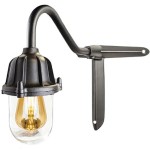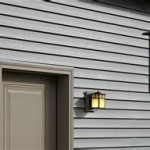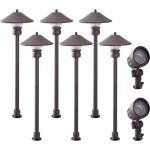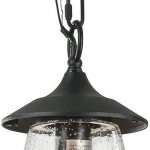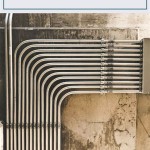Illuminating the Outdoors: A Comprehensive Guide to All-Weather Lanterns
Outdoor lighting plays a critical role in enhancing the functionality and aesthetics of exterior spaces. From illuminating pathways and patios to creating ambiance for outdoor gatherings, the right lighting solution can transform a dark and uninviting area into a welcoming and usable extension of the home. Among the myriad of outdoor lighting options available, all-weather lanterns stand out for their durability, versatility, and ability to withstand the elements. This article delves into the characteristics, benefits, and considerations associated with selecting all-weather outdoor lanterns, providing a comprehensive guide for homeowners seeking reliable and aesthetically pleasing outdoor lighting solutions.
All-weather lanterns are specifically designed and constructed to endure a wide range of environmental conditions. Unlike standard indoor or even some outdoor lighting fixtures, these lanterns are engineered to resist moisture, temperature fluctuations, UV exposure, and physical impacts. This resilience makes them ideal for use in diverse climates, from regions with heavy rainfall and snowfall to areas with intense sunlight and extreme temperatures. The materials used in their construction and the design of their housings are carefully selected to ensure long-lasting performance and protection against the detrimental effects of outdoor exposure.
Essential Features of All-Weather Lanterns
The durability and performance of all-weather lanterns are primarily attributed to their specific design features and the materials used in their construction. Understanding these key elements is crucial in selecting a lantern that will effectively withstand the rigors of outdoor use and provide years of reliable illumination.
One of the most important aspects of an all-weather lantern is its water resistance. These lanterns are typically constructed with watertight seals and weatherproof housings to prevent moisture from entering and damaging the internal components, particularly the electrical elements. The Ingress Protection (IP) rating is a standardized measure of a product's resistance to dust and water. An IP rating of IP44 or higher is generally recommended for outdoor lanterns, indicating that the lantern is protected against splashing water from any direction. For more exposed locations, such as near the coast or in areas with frequent heavy rainfall, an IP rating of IP65 or higher may be preferable, providing protection against water jets.
Corrosion resistance is another critical factor, particularly in coastal areas or regions with high humidity. Saltwater and moisture can accelerate the corrosion of metal components, leading to premature failure. All-weather lanterns often utilize corrosion-resistant materials such as stainless steel, aluminum, or durable plastics. Powder coating is also frequently employed to provide an additional layer of protection against corrosion and weathering. This coating creates a tough, durable finish that helps to prevent rust and other forms of degradation.
UV resistance is essential to prevent the lantern's finish and components from fading, cracking, or becoming brittle due to prolonged exposure to sunlight. UV-resistant plastics and coatings help to protect the lantern's appearance and structural integrity over time. This is especially important for lanterns with colored finishes, as UV exposure can cause the color to fade significantly.
Impact resistance is also a consideration, particularly in areas where the lantern may be subjected to accidental impacts or vandalism. Robust construction and the use of durable materials such as impact-resistant polycarbonate or tempered glass can help to protect the lantern from damage. The thickness of the glass or plastic and the overall design of the lantern contribute to its ability to withstand impacts without shattering or cracking.
Types of All-Weather Lanterns: Styles and Functionality
All-weather lanterns are available in a diverse range of styles and configurations, allowing homeowners to select options that complement their outdoor décor and meet their specific lighting needs. Understanding the different types of lanterns and their intended applications is important in making an informed decision.
Wall-mounted lanterns are a common choice for illuminating doorways, garages, and pathways. These lanterns are typically mounted directly to the wall and provide focused light in a specific area. They are available in various styles, from traditional carriage lanterns to modern, minimalist designs. Wall-mounted lanterns often feature downward-facing lights to minimize light pollution and direct the illumination where it is needed most.
Post-mounted lanterns are designed to be installed on top of a post or pier, making them suitable for illuminating driveways, walkways, and gardens. These lanterns are often larger than wall-mounted lanterns and provide a wider area of illumination. They can be used to create a focal point in the landscape or to provide general lighting for larger areas.
Hanging lanterns, also known as pendant lanterns, are suspended from a chain or wire and are ideal for illuminating porches, patios, and gazebos. These lanterns can add a touch of elegance and charm to outdoor spaces. They are available in a variety of styles, from traditional oil-rubbed bronze lanterns to contemporary glass and metal designs.
Portable lanterns offer flexibility and convenience, allowing users to move the light source as needed. These lanterns are often battery-operated or solar-powered and can be used for camping, picnics, or emergency lighting. They are typically lightweight and easy to carry, making them a versatile option for outdoor use.
In terms of light source, all-weather lanterns can utilize various types of bulbs, including incandescent, halogen, LED, and solar-powered options. LED bulbs are increasingly popular due to their energy efficiency, long lifespan, and ability to produce a bright, consistent light. Solar-powered lanterns offer a sustainable and environmentally friendly option, as they harness the power of the sun to generate electricity. The choice of light source will depend on the desired brightness, energy efficiency, and aesthetic preferences.
Key Considerations for Selecting All-Weather Lanterns
Choosing the right all-weather lanterns requires careful consideration of several factors, including the intended use, the environmental conditions, and the desired aesthetic. By carefully evaluating these aspects, homeowners can ensure that they select lanterns that will provide long-lasting performance, enhance the beauty of their outdoor spaces, and contribute to a safe and secure environment.
Before selecting a lantern, it is essential to determine its primary purpose. Will it be used to illuminate a walkway, provide ambient lighting for a patio, or serve as a security light near a doorway? The intended use will influence the type of lantern, the brightness of the light, and the required level of weather resistance. For example, a lantern used to illuminate a pathway should provide sufficient brightness to ensure safe navigation, while a lantern used for ambient lighting should create a warm and inviting atmosphere.
The environmental conditions in the area where the lantern will be installed are also a crucial consideration. In coastal areas, corrosion resistance is paramount. In regions with extreme temperatures, the lantern should be able to withstand both heat and cold without cracking or warping. In areas with frequent heavy rainfall, a high IP rating is essential to prevent water damage. Understanding the specific environmental challenges will help to narrow down the selection to lanterns that are designed to withstand those conditions.
The aesthetic appeal of the lantern is also important. The lantern should complement the style of the home and the surrounding landscape. Consider the color, finish, and overall design of the lantern to ensure that it blends seamlessly with the existing décor. All-weather lanterns are available in a wide range of styles, from traditional to modern, so homeowners can find options that match their personal preferences.
The brightness and color temperature of the light emitted by the lantern should also be considered. Brightness is typically measured in lumens, with higher lumen values indicating a brighter light. The appropriate brightness will depend on the intended use of the lantern. Color temperature is measured in Kelvin (K), with lower Kelvin values indicating a warmer, more yellowish light and higher Kelvin values indicating a cooler, more bluish light. Warmer light is often preferred for creating a cozy and inviting atmosphere, while cooler light is better for providing clear and bright illumination.
Finally, consider the ease of installation and maintenance. Some lanterns may require professional installation, while others can be easily installed by homeowners. Ensure that the lantern is easy to clean and maintain, and that replacement bulbs are readily available. Regular cleaning and maintenance will help to prolong the lifespan of the lantern and ensure that it continues to provide optimal performance.

All Weather Wicker Lanterns West Elm

Velo Metal Lantern With Solar Led Candle Large Outdoor Decor Lanterns

Outdoor Patio Lights Lanterns String Crate Barrel

Kate Outdoor Lantern Garden Solar Powered Rechargeable Suns Lifestyle

Careyes Handwoven Outdoor Lantern Pottery Barn

Garden Lanterns Best To Buy Now

14 Best Outdoor Lanterns For Summer 2024 Our Picks Now

Pottery Barn Careyes All Weather Outdoor Wicker Lantern Sponsored Paid Lanterns

Hazel Lantern With Flameless Candle Outdoor Decor Lanterns

Modern Black Metal Outdoor Lanterns West Elm
Related Posts

